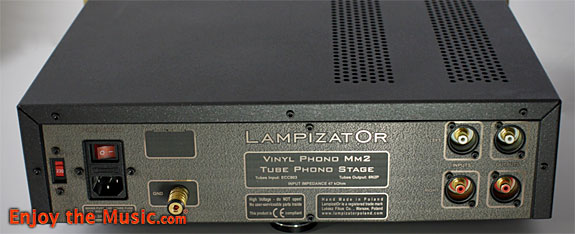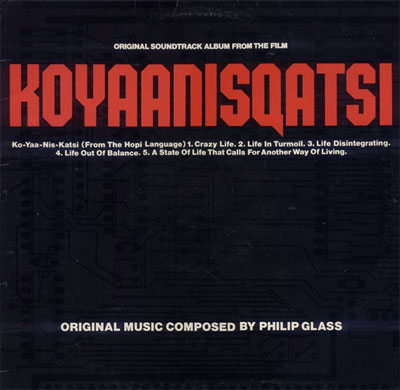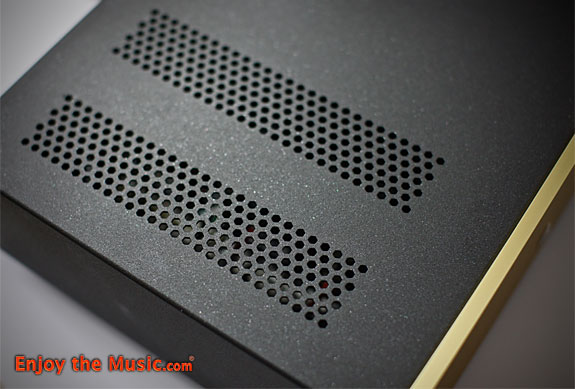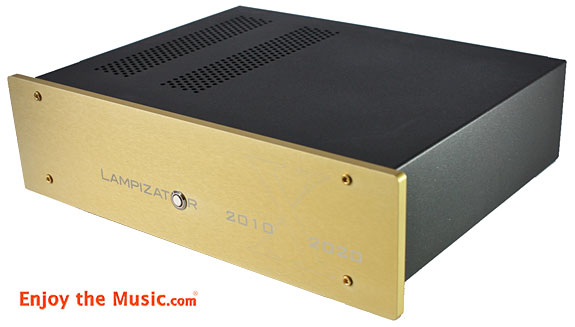January 2021

LampizatOr MM2 Moving-Magnet (MM) Phono Stage Review
Beautiful to behold and a joy to use.

Turntables have always been one of my favorite sources for my playback system. They are highly customizable, straightforward to use. They tend to offer a great bang for the buck, especially on the entry-level ones. In fact, you can purchase a more expensive turntable, start with a reasonably inexpensive cartridge that sounds great and move into higher performance ones over time, if you wish. Of course, there is a downside. They do require a bit more care and feeding than their digital brethren.
The two main types of cartridges on the market are moving magnet (MM) and moving coil (MC). They both have their advantages and disadvantages. However, as a rule, moving magnet cartridges tend to be less expensive to date. Their performance is not as high as their counterparts. The good news is you will find that most of the phono stages that are built into components will work with these without any additional equipment. The bad news, there are very few high-end phono stages available, or at least this reviewer hasn’t seen any.
What The Heck
A few months ago, I chanced upon an email asking if anyone was interested in reviewing a phono stage by LampizatOr. Usually, I don’t go for them because they tend to take a great deal of work, and sadly you have to return them long before you really have a chance to enjoy them. However, Covid changed quite a few things, especially the amount of time I spent in front of my stereo. So, I thought, “what the heck.” This review is the result….
LampizatOr was founded in Warsaw, Poland, in 2010 by Lukasz Fikus. The company bears the nickname given to him by friends, customers, and followers in the DIY community who enjoyed and benefited from his out-of-the-box solutions over the years. The name itself plays on the Polish word for the vacuum tube, Lampa, and the pop culture icon The Terminator.
The products its manufacturers are built in their Warsaw Poland factory. They are made to order with parts sourced from local businesses. The company strives to create the best components using sustainable tubes, the latest vacuum tube, and digital technologies to their fullest. This particular niche sets them apart from many of their competitors. It is a point of pride for the company itself.

It will come as no surprise that after a brief exchange of emails and a little bit of patience, DHL arrived at my doorstep with a brand new MM2 Phono Stage one afternoon. This was the reason for the little bit of the lesson on phono stages. I knew that I would receive a phono stage. What I didn’t realize was that the phono stage was specifically for moving magnet cartridges. It took a bit of moving magnets and other parts around, pardon the bad joke. I might use my turntable quite a bit, but MM cartridges, not so much.
Luckily the problem was a relatively easy fix. I fitted one of my VPI JMW 12-3DR 3D-printed tonearm with an Ortofon 2M Blue cartridge. The reason is straightforward; I am a big fan of Ortofon cartridges. I use several of their MC cartridges for my daily list. It didn’t hurt that I also happened to have the cartridge on-hand and somewhat broken-in.
All Under Control…
It might have taken a few extra steps and a couple of moments of doubt, but in the end, everything worked out. The cartridge went on reasonably smoothly. The alignment, the real bane of my existence, wasn’t awful, and it was time to really look at what got delivered. Well, I might’ve peaked along the way, but don’t tell anyone.

The LampizatOr Vinyl Phono MM2 Phono Stage is a beautifully built stereo component. It starts with a hefty machined aluminum front panel and continues throughout the chassis. The one that came also bore their anniversary logo, 2010 / 2020, on either side. An elegant feature that only serves to make the piece even more appealing. Finally, the glow of tubes, coupled with the blue led from the switch on the front, last but not least. It has to be one of the most straightforward and most elegant phono stages in my system for quite some time.
Internally the LampizatOr is also a thing of beauty. This is definitely not a case of the beauty going only skin deep. The internal construction is artfully done, and the technology is well thought out. The internal mechanics are exceptionally well thought out and executed. The parts seem to be of excellent quality, and of course, the tubes are high pedigree. This might be the baby sibling of the MM1. Still, according to the company, there is no construction difference, instead of implementation and materials. I could believe it. This would be a formidable unit to build better if that’s possible.
The setup would be what one might expect from a component with an Owner’s Manual with 3 lines.
1. Plug-In
2. Wait 30 seconds for tubes to warm up
3. Enjoy!

Ok, that is really the Short Owner’s Manual, but you get the idea. There is no actual setup for the phono stage except to set it up, plug it in and let it burn-in. Of course, letting it burn in with music is always preferable. Over the next few weeks, I allowed the MM2 burn-in and, at the same time, more time on my Ortofon 2M Blue MM Cartridge. This really became a labor of love because trying not to form opinions while things settle down is awfully hard. However, mission accomplished.
The Review Awaits
The day finally arrived to begin really putting the newly burned-in playback system to the test. My first thought was to try something with some real dynamic beef to it. So, I went to one of my all-time favorites. Patricia Barber’s “The Thrill is Gone” [Café Blue on Premonition Records, 90760-1]. Patricia’s voice is soft, warm, and full of life. The subtle tones that make her voice so intoxicating are easily lost or compressed, something that happens, even on excellent playback devices, both digital and analog.
Interestingly, the first thing I noticed was just how unconstrained the MM cartridge sounded. Admittedly my expectations were reasonably low, but this review was full of surprises. Patricia’s voice had all the life I had come to expect from excellent playback. The warmth and lifelike tonality were present, but more importantly, it had the detail as well. There was no particular overlap in the soundstage, and everything seemed to come together in a perfect tapestry of sound.
In addition to the beautiful vocals of Patricia, the instrumentals were exquisitely captured and reproduced. This creates a synergy of sound and a more difficult challenge for the cartridge. The attacks and decays from the individual instruments, let alone together, is humbling. Again, it was hard to believe that a MM cartridge was producing such high fidelity. It might have suffered slightly in some of the most transient parts, but that was certainly not enough to take away from any type of enjoyment. Especially if you consider the price of the cartridge itself.

The second selection chosen as part of this review was Philip Glass’s “Koyaanisqatsi” [Koyannisqatsi, Antilles Records, ASTA 1]. This is somewhat of an esoteric selection on my part. Part of a trilogy of operas written by Philip Glass back in the 1980s happens to be one of my favorite minimalist operas. I’ve also played in more times on relatively inexpensive equipment than I care to count. Most of that was on turntables with MM cartridges, so it felt right in this case.
Firstly, the track itself is meant to be somewhat dark and foreboding, or is it? It certainly is full of sinuous poise and circumstance. The word Koyaanisqatsi is repeated again and again throughout the track. Though one might want a bit more grain in the voice, it serves a purpose as a counterpoint to a somewhat rhythmic melody. Though not rhythmic enough, as it continuously seems out of balance somehow.
The feeling that something is somewhat out of balance is the entire opera captured on the album. The first track sets the tone for the album and gives the listener a feel for the music itself. Though the recording is not audiophile quality, some of the more intricate details are readily available, if only slightly buried within mass-market mastering and pressing.
The LampizatOr MM2 phono stage seemed to pull more detail than seemed possible from the Ortofon Blue cartridge. The track begins with music that is somehow beautiful, fragile, and slightly out of key. Interestingly, this is somewhat hard to hear, the melody itself tends to hide this fact, or perhaps the music isn’t out of key, the point being that there is something wrong. Regardless, this is the first time I heard it on a turntable with a MM cartridge, though. Impressive.

Once the vocal intonating Koyaanisqatsi began, the track continued to explode with detail. The separation between the music and the vocal was also impressive. Each note seemed distinct and well defined. There did not seem to be any constriction even when there was a great deal of low- or high-level detail. In fact, some of the most challenging parts of the track seemed to be almost effortless. If there was one complaint, it wasn’t that the detail w”: isn’t there, it was that there was not enough.
The third track for the review was Harry Belafonte’s “The Marching Saints” [Harry Belafonte At Carnegie Hall, RCA, LSO-6066]. This is a fun rendition of the old favorite, “When the Go Marching In,” and was recorded live as part of the album recorded on April 19th and 20th, 1959. It is another example of perfectly captured male vocals with an equally well captured instrumental accompaniment. It sounds good on nearly all systems, but the detail is dependent on the system.
The track opens with Harry Belafonte discussing the origins of the song. If one pays careful not, they can hear the grain in his voice when listening to it with the MM2 and Ortofon combination. This is certainly a departure from the norm where this particular detail tends to be lost. Moreover, you can hear the emotion as he continues to explain further and ultimately breaks into the lyric’s first rendition.
The addition of music to the selection increases the complexity quite substantially. Although you can hear an inevitable drop in the fidelity, it is by no means substantial. There is enough detail that one is transfixed by Belafonte’s skill and excitement as he continues to draw the listener into his world. The music and singing grow more complex, and the capability to handle it are virtually up to the task. One can almost imagine themselves at the event so many years ago.

The review’s final selection was Andrea Bocelli’s “Time to Say Goodbye” [Romanza, Polydor 0602547189288]. Male vocals tend to be very difficult to reproduce. Add to that female vocals, and that complexity goes up substantially. If that wasn’t enough, when you add music to that formula, you have something that would bring even the most sophisticated and expensive playback system to its knees. Imagine one that has just a MM cartridge.
Honestly, I didn’t have that much hope of the MM2 and Ortofon pulling off the track that well, but I was shocked. Andrea’s voice was reproduced with the minimal collapse in ethereal extension. That is to say that it was perfectly imperfect. If you had never heard the recording on anything besides this before, you would certainly not go looking for more. Why would you? This was stunning.
The second vocal on the track Sarah Brightman also sounded exceptional. Her voice was captured nearly as well as Andrea’s. There was a little lost in the upper treble, perhaps due to the amount of different music being played simultaneously, but not much. Indeed, the lifelike characteristics did not suffer, and my enjoyment did not diminish. In fact, it is hard to imagine anyone who enjoys either performer finding fault with the experience.
Finally, putting the two vocals together with the instrumentals created a synergistic experience. The MM2 and Ortofon once again did a great job of reproduction. It definitely struggled a bit with the sheer amount of information. There was more compression than on the other three selections, but that was to be expected. There were far more dynamics going on in this track. However, it still did surprisingly well.

The Conclusion…
The LampizatOr MM2 phono stage is a well-designed and executed piece of equipment. It is not only beautiful to behold, but it is also a joy to use. It did a spectacular job extracting more detail from an Ortofon 2M Blue MM cartridge than I thought possible. It did that and made the result sound fantastic, which was more important.
Nothing comes without a price. The MM2 retails for $3800. You might be thinking that is a lot of money for a moving magnet phono stage. It is. Considering that most people use the phono stage in whatever they have on-hand, it is quite a lot of money. However, you get what you pay for. In this case, you get perhaps the very best phono stage that this reviewer has heard designed explicitly for this type of cartridge.
There is, of course, a second option. You have an MC cartridge and are looking for a high-performance phono stage. You can purchase the LampizatOr MM2 and an external SUT (input stage transformer). This allows you to hook up any cartridge you can imagine with the specific impedance load needed. It might be a more expensive option, but it is likely the best choice in the world of high-fidelity audiophile reproduction.
In conclusion, if you are looking for a high-performance phono stage with more options than you can imagine, look no further than the LampizatOr MM2. I’ve reviewed quite a few phono stages through the years, and none of them have impressed me as much as this one. I can’t even imagine what their flagship sounds like, but I can dream. I only wish I could afford it because I would add it to my reference system in a heartbeat.
For those of you that can, do yourselves a favor. Try this one out. You won’t be disappointed.
| Tonality |  |
| Sub–bass (10Hz – 60Hz) |  |
| Mid–bass (80Hz – 200Hz) |  |
| Midrange (200Hz – 3,000Hz) |  |
| High Frequencies (3,000Hz On Up) |  |
| Attack |  |
| Decay |  |
| Inner Resolution |  |
| Soundscape Width Front |  |
| Soundscape Width Rear |  |
| Soundscape Depth |  |
| Soundscape Extension Into Room |  |
| Imaging |  |
| Fit And Finish |  |
| Self Noise |  |
| Value For The Money |  |

Check out Enjoy the Music!
See many great reviews by Enjoy the Music.com at this link.
Specifications
Type: Vacuum tube stereo moving-magnet (MM) phono stage
Inputs: Unbalanced RCA (balanced XLR available by special order)
Output: Unbalanced RCA
External SUT transformer compatibility for MC cartridges
High sensitivity for low output cartridges
Copper sheet capacitors in the signal output
Tube rolling is possible with ECC803 and ECC88 types
Chassis: 10mm aviation grade aluminum front
MM cartridge compatibility with 47kOhm input
Power Supply: User selectable 115V / 230V (240)
Dimensions: 430 x 130 x 330 (WxHxD in mm)
Weight: 22 lbs.
Warranty: Five years parts and labor
Price: $3800
Company Information
LampizatOr
Brzozowa 26A
05-552 Warsaw
Poland
Voice: +48 69 799 4716
E-mail: lampizator@lampizator.eu
Website: LampizatOrPoland.com
USA Distributor
LampizatOr North America
Website: LampizatOr.com















Want to join discussion?
Feel free to contribute!